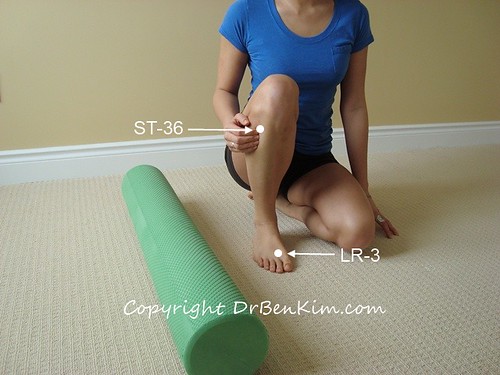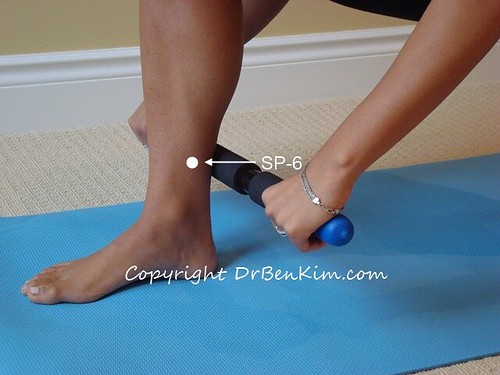You are here
Three Acupressure Points For Good Overall Health
 Acupressure is a healing art that involves applying pressure to specific points on your body. The idea is to manually stimulate blood flow to your largest nerves, which promotes healthy nerve function, which in turn, promotes optimal cellular function, as all cellular activity is ultimately governed by your nervous system.
Acupressure is a healing art that involves applying pressure to specific points on your body. The idea is to manually stimulate blood flow to your largest nerves, which promotes healthy nerve function, which in turn, promotes optimal cellular function, as all cellular activity is ultimately governed by your nervous system.
So much like you can maintain healthy muscles through regular exercise, you can maintain healthy nerves through regular acupressure.
One of the best features of acupressure is that you don't need to spend thousands of dollars and many months or years to learn how to do it effectively.
During a 300-hour postgraduate medical acupuncture program I took several years ago, after spending a number of days reviewing dozens of key nerve and blood vessel points throughout the body and face, I distinctly remember the lead professor saying that even if we treated the same five most powerful points on every patient, irrespective of the health conditions being treated, we would likely get excellent results.
Over time, through my own experiences with providing acupuncture and acupressure treatments, I have found that most people can experience significant health benefits by regularly stimulating just three specific points on a regular basis. For specific health concerns, it's best to have a clinician consider other points as well. But for the vast majority of people, applying pressure to just three points several times a week can provide a real boost to nervous system tone and overall health.
What follows are descriptions and links to pictures of the three acupressure points that I recommend most people stimulate on themselves to promote and maintain good overall health:
- Large Intestine 4 (LI-4): located in the soft, fleshy web that sits between your thumb and forefinger.
Anatomy: this point corresponds with a muscular branch of the median nerve, the deep branch of the ulnar nerve, proper palmer digital nerves from the first common palmar digital nerve, and the superficial branch of the radial nerve. Tributary branches of the cephalic vein, the radial artery, and the first dorsal metacarpal artery and companion veins can also be found in this region.
- Liver 3 (LR-3): located in the soft flesh that sits between your big and 2nd toes, the equivalent of LI-4 on your foot.
Anatomy: this point corresponds with the medial dorsal cutaneous nerve, the medial branch of the deep peroneal nerve, and a muscular branch from the deep branch of the lateral plantar nerve. The dorsal venous network of the foot , the first dorsal metatarsal artery, and a companion vein are also found in this region.
- Spleen 6 (SP-6): located approximately three finger widths above the inner ankle bone, in a tender region of the lower calf muscle.
Anatomy: this point is found in between the medial margin of the tibia and the soleus muscle. As you go deeper, this point corresponds with the flexor digitorum longus and flexor hallucis longus muscles. This point also corresponds with a cutaneous branch of the saphenous nerve, motor branches of the tibial nerve, and the deeper trunk of the tibial nerve. A superficial branch of the great saphenous vein, the posterior tibial artery, and a companion vein to the posterior tibial artery are also in this region.
Use your fingers and/or thumbs to massage these points on one or both sides of your body for a few minutes, up to two times a day. For optimal results, massage these points on both sides of your body during each session.
When you correctly locate these points, you should feel some tenderness upon applying pressure to them. Apply enough pressure/massage to create a mild, dull, and possibly achy sensation.
If you are not sure about the location of each of the points listed above, I recommend that you take a look at the following book:
Acupressure's Potent Points: a Guide to Self-Care for Common Ailments
I actually recommend this as a reference book for people who are interested in natural health remedies, as it provides clear illustrations of all of the major acupressure points that acupuncturists use in clinical practice.
Another helpful reference book on this topic - one that is often appreciated by folks who want references to scientific literature - is:
The Trigger Point Therapy Workbook: Your Self-Treatment Guide for Pain Relief, Second Edition
Please note: It's best to consult with an acupuncturist before receiving acupressure or acupuncture treatments while pregnant. Certain points, including SP-6 can cause uterine contractions. In fact, massaging SP-6 is a natural method of inducing labor when desired.
Also, acupressure should not be applied to legs that have varicose veins. Applying deep pressure or massage to varicose veins can potentially lead to a pulmonary embolism.
Join more than 80,000 readers worldwide who receive Dr. Ben Kim's free newsletter
Receive simple suggestions to measurably improve your health and mobility, plus alerts on specials and giveaways at our catalogue
Please Rate This
Related Posts | |||














Comments
Acupuncture and pregnancy warning
Thank you for the great service you provide through education. Acupuncture and acupressure are safe and provide significant relief during pregnancy. It seems a better warning would have been to seek a licensed practitioner with experience treating those who are pregnant, because they will be aware of the contra-indicated points for each stage of pregnancy.